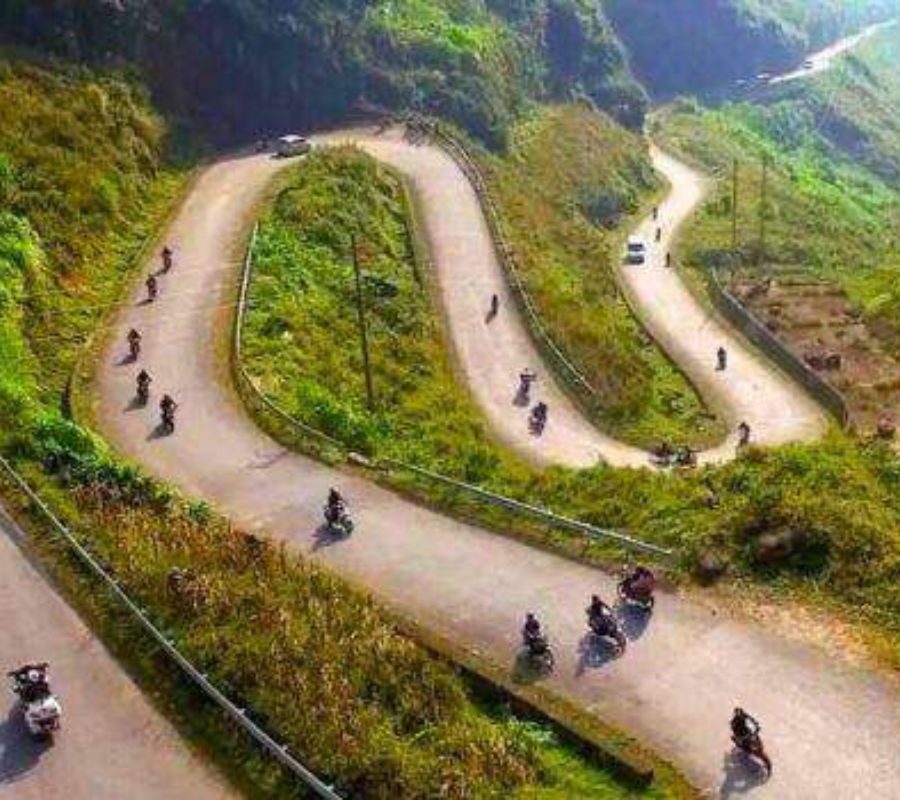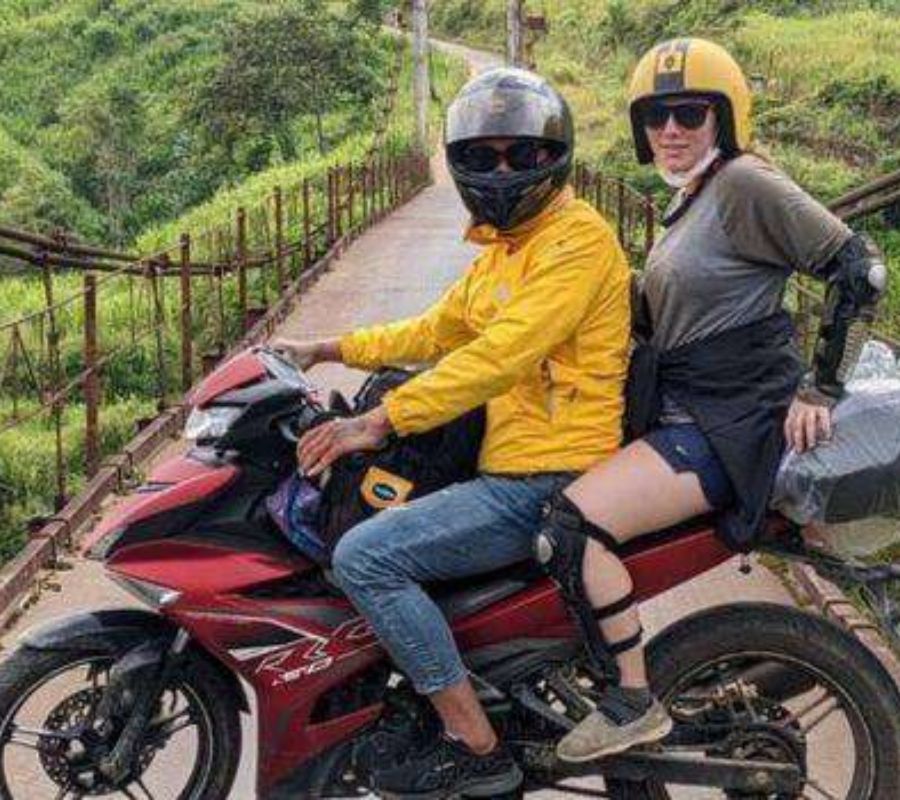Tin tức
Ha Giang Loop Tour Experience the Wild Beauty of Northern Vietnam
Embark on a journey to the rugged landscapes of Northern Vietnam with a Ha Giang Loop tour. This adventure takes you through winding mountain roads, lush terraced fields, and remote ethnic villages, providing an authentic experience of this lesser-known region. Whether you’re a seasoned traveler looking for off-the-beaten-path destinations or a nature enthusiast seeking breathtaking views, Ha Giang will not disappoint.
>>> Explore self riding motorcycle tours Vietnam
1. Exploring Ha Giang Province
Ha Giang Province is located in the far north of Vietnam, bordering China. It is known for its dramatic scenery, including towering limestone peaks, deep valleys, and winding rivers. The capital city, also named Ha Giang, serves as the gateway to this fascinating region.
The Town of Ha Giang
The town of Ha Giang is a bustling hub where travelers can stock up on supplies before embarking on their loop tour. Here, you can visit local markets, sample traditional dishes, and learn about the culture of the ethnic groups that call this area home.
Dong Van Karst Plateau Geopark
One of the highlights of a Ha Giang loop tour is a visit to the Dong Van Karst Plateau Geopark, a UNESCO-recognized site known for its unique geological formations. Travelers can explore ancient rock formations, visit traditional Hmong villages, and take in panoramic views of the surrounding mountains.
Quan Ba Heaven’s Gate
Another must-see attraction in Ha Giang is Quan Ba Heaven’s Gate, a scenic mountain pass that offers stunning views of the surrounding landscape. From here, travelers can admire the beauty of the Twin Mountains and snap some unforgettable photos.

>>> Hoi an motorcycle tour for 4 days 3 nights
2. Trekking Through Tribal Villages
One of the most rewarding experiences of a Ha Giang loop tour is the opportunity to trek through remote tribal villages and interact with the locals. Many of the ethnic groups in this region, such as the Hmong and Dao people, have preserved their traditional way of life for centuries.
Homestay Experiences
Travelers can immerse themselves in the culture of Ha Giang by staying in homestays run by local families. This provides a unique opportunity to learn about the customs, traditions, and daily life of the ethnic minority groups in the area.
Hill Tribe Markets
Visiting weekly hill tribe markets is another highlight of a Ha Giang loop tour. These vibrant markets are where locals gather to buy and sell goods, socialize, and showcase their traditional handicrafts. Travelers can browse colorful textiles, handmade jewelry, and local produce while taking in the lively atmosphere.
Meeting Local Artisans
Many villages in Ha Giang specialize in traditional crafts such as weaving, embroidery, and blacksmithing. Travelers can meet local artisans, watch them at work, and even try their hand at these time-honored skills. This provides a deeper insight into the rich cultural heritage of the region.
3. Riding the Famous Ha Giang Loop
The Ha Giang loop is a popular route for motorbike enthusiasts and adventurous travelers looking to explore the stunning landscapes of Northern Vietnam. The circuit covers approximately 300 kilometers of scenic roads, including steep mountain passes, hairpin turns, and jaw-dropping vistas.
Motorbike Rentals
Travelers can rent motorcycles in Ha Giang town to embark on the loop tour. Both manual and automatic bikes are available, and it’s recommended to choose a reputable rental agency to ensure a safe and reliable ride. Most tours include a guide who is familiar with the route and can assist with any challenges along the way.
Scenic Stops
Along the Ha Giang loop, there are numerous opportunities to stop and admire the breathtaking scenery. From towering cliffs to picturesque rice terraces, each turn in the road reveals a new vista waiting to be explored. Travelers can take their time, soak in the surroundings, and capture memorable moments on camera.

Accommodation Options
During the Ha Giang loop tour, travelers can choose from a range of accommodation options to suit their preferences and budget. From rustic guesthouses overlooking valleys to eco-friendly lodges nestled in the mountains, there are plenty of choices for a comfortable stay after a day of riding.
4. Sampling Local Cuisine
No visit to Ha Giang is complete without sampling the delicious local cuisine, which reflects the flavors of the region’s diverse ethnic groups. From hearty stews to fragrant noodle dishes, there is a wide variety of culinary delights waiting to be discovered.
Pho Cuon
Pho cuon is a signature dish of Ha Giang, consisting of thin rice noodles rolled with fresh herbs, lettuce, and your choice of fillings such as grilled meat or tofu. The dish is light, refreshing, and bursting with flavor, making it a favorite among locals and visitors alike.
Thang Co
Thang co is a traditional Hmong dish made from a mix of meats, including buffalo, pork, and offal, cooked with aromatic herbs and spices. The hearty stew is often enjoyed with corn wine and is a warming comfort food perfect for chilly mountain nights.
Banh Cuon
Banh cuon is a popular breakfast dish in Ha Giang, made from steamed rice rolls filled with savory ingredients like minced pork, mushrooms, and shallots. The dish is typically served with fried shallots, fresh herbs, and a tangy dipping sauce, creating a harmonious balance of textures and flavors.
5. Photography Opportunities
Ha Giang’s stunning natural landscapes and vibrant ethnic culture provide endless opportunities for photography enthusiasts to capture striking images. From mist-shrouded valleys to colorful hill tribe markets, every scene tells a story waiting to be documented.
Golden Hour Scenery
The soft golden light of sunrise and sunset casts a magical glow over Ha Giang’s mountains and valleys, creating a dreamlike atmosphere for photographers. Capturing the play of light and shadow on the rugged terrain adds depth and drama to landscape shots.
Portraits of Ethnic Minorities
The diverse ethnic groups of Ha Giang, each with their own distinct traditions and attire, make for compelling portrait subjects. Travelers can interact with locals, seek their permission before taking photos, and capture the essence of their culture through expressive portraits.
Street Scenes
Exploring the bustling markets, winding alleyways, and colorful storefronts of Ha Giang town yields a wealth of candid street photography opportunities. From vendors busy selling wares to children playing in the streets, every moment presents a chance to document everyday life in this vibrant region.
6. Responsible Travel Practices
As Ha Giang gains popularity as a tourist destination, it’s important for visitors to practice responsible travel to preserve the region’s natural beauty and support the local communities. By following sustainable tourism guidelines, travelers can ensure that their visit has a positive impact on the environment and residents.
Respect Local Customs
Respect for local customs and traditions is key to responsible travel in Ha Giang. Visitors should dress modestly, ask for permission before taking photos, and follow cultural norms when interacting with villagers. Learning a few words of the local language can also go a long way in showing respect for the community.
Minimize Environmental Impact
Minimizing environmental impact is essential when exploring Ha Giang’s delicate ecosystems. Travelers should avoid littering, reduce plastic waste by carrying reusable water bottles, and choose eco-friendly transportation options whenever possible. Leave only footprints, take only memories.
Support Local Businesses
Supporting local businesses and artisans is a great way to contribute to the economic growth of Ha Giang. Purchase souvenirs directly from craftspeople, dine at family-owned restaurants, and opt for homestays run by local families. Your patronage helps sustain traditional livelihoods and fosters cultural exchange.
FAQs
Q: Is it safe to ride a motorbike on the Ha Giang loop?
A: While the Ha Giang loop offers stunning views, it is essential to prioritize safety when riding a motorbike. Choose a reliable rental agency, wear appropriate safety gear, and be mindful of road conditions and traffic. It’s also recommended to hire a guide who is familiar with the route.
Q: What is the best time of year to visit Ha Giang?
A: The best time to visit Ha Giang is during the dry season from October to April when the weather is mild and pleasant. Avoid the rainy season from May to September, as the roads can become treacherous and landslides are common.
Q: Do I need a special permit to travel to Ha Giang?
A: Foreign visitors are required to obtain a permit to travel to certain areas of Ha Giang, particularly near the border regions. This permit can be arranged through a licensed tour operator or the local authorities in Ha Giang town.
Q: How physically demanding is trekking in Ha Giang?
A: Trekking in Ha Giang can vary in difficulty depending on the routes chosen. Some trails may involve steep ascents and descents, while others are more leisurely walks through villages and rice fields. It’s advisable to choose a trek that matches your fitness level and consult with your guide beforehand.
Q: Are vegetarian and vegan options available in Ha Giang?
A: While Ha Giang’s cuisine is primarily meat-based, there are vegetarian and vegan options available at certain restaurants and homestays. Be sure to inform your hosts of any dietary restrictions in advance so they can accommodate your needs.
Conclusion
A Ha Giang loop tour offers a truly immersive experience in the wild beauty of Northern Vietnam, combining breathtaking landscapes, cultural encounters, and adrenaline-pumping adventures. Whether you’re riding a motorbike along winding mountain roads, trekking through tribal villages, or sampling local delicacies, Ha Giang promises an unforgettable journey off the beaten path. By practicing responsible travel habits and respecting the local communities, visitors can help preserve the charm and authenticity of this hidden gem in the Vietnamese countryside.
Vietnam Two Wheels
- Address:
- Dalat, Lam Dong, Vietnam
- Topaz Elite, 66 Cao Lo, District 8, HCM City
- Hotline: +84 982 628 882
- Gmail: booking@vietnamtwowheels.com
- Website: https://www.vietnamtwowheels.com/


